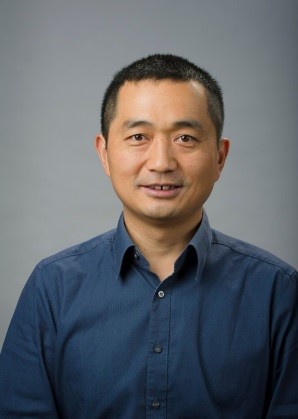报告题目:Ion implantation + sub-second annealing: a route towards hyperdoped semiconductors
报 告 人:周生强 研究员 (德国德累斯顿-罗森道夫亥姆霍兹研究中心)
报告时间: 7月20号上午10: 30
报告地点: 激光所报告厅
报告摘要:
Ion implantation + sub-second annealing: a route towards hyperdoped semiconductors
*S.Zhou
Helmholtz-Zentrum Dresden-Rossendorf, Institute of Ion Beam Physics and Materials Research, Dresden, 01328, Germany
*s.zhou@hzdr.de
Doping allows us to modify semiconductor materials for desired electrical, optical and magnetic properties. The solubility limit is a fundamental barrier for dopants incorporated into a specific semiconductor.Hyperdoping refers to doping a semiconductor much beyond the corresponding solid solubility limit and often results in exotic properties. For example, Ga hyperdoped Ge reveals superconductivity and Mn hyperdoped GaAs represents a typical ferromagnetic semiconductor. Ion implantation followed by annealing is a well-established method to dope Si and Ge. This approach has been maturely integrated with the IC industry production line. However, being applied to hyperdoping, the annealing duration has to be shortenedto millisecond or even nanosecond. The intrinsic physical parameters related to dopants and semiconductors (e.g. Solubility, diffusivity, melting point and thermal conductivity) have to be considered to choose the right annealing time regime. In this talk, we propose that ion implantation combined with flash lamp annealing in millisecond and pulsed laser melting in nanosecond can be a versatile approach to fabricate hyperdoped semiconductors. The examples include magnetic semiconductors [1-5], highly mismatched semiconductor alloys (Ge1-xSnx [6] and GaAs1-xNx [7]), n++ Ge [8, 9] and chalcogen doped Si [10-12].
[1] M. Khalid, et al., Phys. Rev. B 89, 121301(R) (2014).
[2] S. Zhou, J. Phys. D: Appl. Phys. 48, 263001(2015).
[3] S. Prucnal, et al., Phys. Rev. B 92, 222407 (2015).
[4] Y. Yuan, et al., ACS Appl. Mater. Interfaces, 8, 3912 (2016).
[5] Y. Yuan, et al., Phys. Rev. Mater. 1, 054401 (2017).
[6] K. Gao, et al., Appl. Phys. Lett.,105, 042107 (2014).
[7] K. Gao, et al., Appl. Phys. Lett.,105, 012107 (2014).
[8] S. Prucnal, et al., Sci.Reports 6, 27643(2016).
[9] S. Prucnal, et al., Semicond. Sci. Technol. 32 115006 (2017).
[10] S. Zhou, et al., Sci. Reports 5, 8329(2015).
[11] Y. Berencén, et al., Adv. Mater. Inter. 5, 1800101 (2018).
[12] M. Wang, et al., Phys. Rev. Applied. submitted (2018).
报告人简介:
周生强自2011年担任德国亥姆霍兹协会青年科学家研究组组长(Helmholtz Young Investigator Group Leader),2018年1月被提聘任为研究所半导体事业部的主任,工作集中在半导体材料,离子辐照材料改性、离子束分析技术,以及离子束在磁性功能材料方面的应用。获得17届国际离子束材料改性青年科学家奖,培养的博士生分别在国际半导体会议(ICPS),磁学会议(ICM)、欧洲材料(EMRS)会议上获得青年科学家奖和最佳Poster奖。作为第一负责人申请到第三方经费约2百万欧元;发表文章超过200篇,引用超过3500次,H因子28。
教育经历
• 2005/01-2007/12,德国德累斯顿理工大学,物理系,博士,导师:Manfred Helm
• 1999/09-2002/06,北京大学,技术物理系,硕士,导师:姚淑德,吴名枋
• 1995/09-1999/06,北京大学,技术物理系,学士,导师:姚淑德
科研与学术工作经历
• 2018/01-今, 德国德累斯顿-罗森道夫亥姆霍兹研究中心,终身研究员,半导体材料部门主任
• 2011/03-2016/02,德国德累斯顿-罗森道夫亥姆霍兹研究中心,离子束物理与材料研究所,研究员,亥姆霍兹协会青年科学家研究组组长
• 2010/03-2011/02,北京大学,技术物理系,特聘研究员
• 2008/13-2010/02,德国德累斯顿-罗森道夫亥姆霍兹研究中心,离子束物理与材料研究所,博士后,合作导师:Manfred Helm